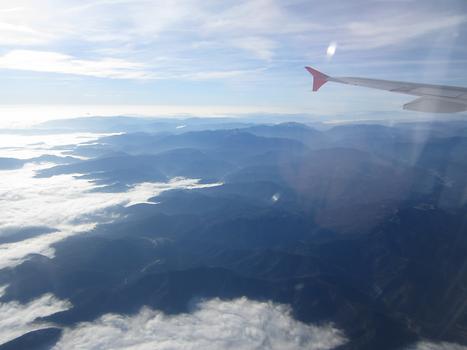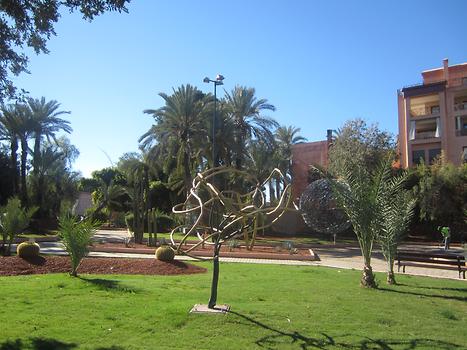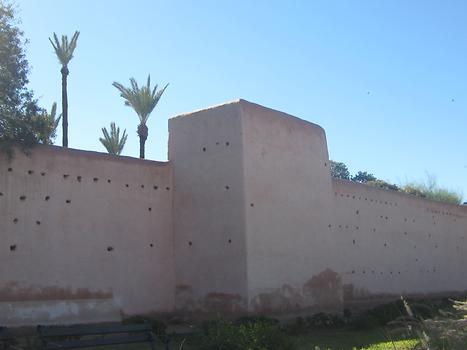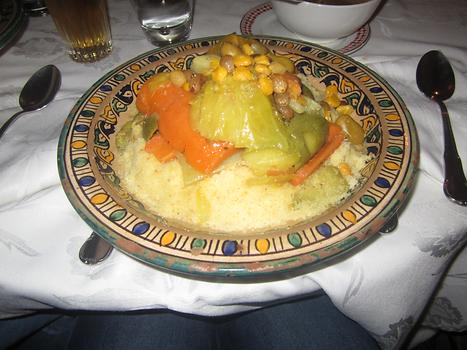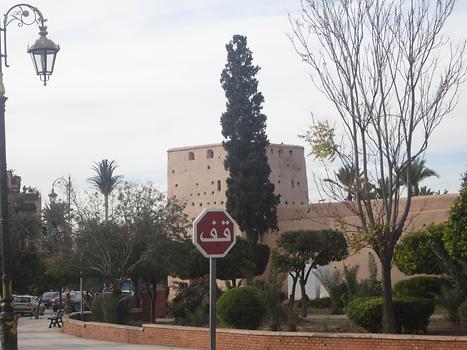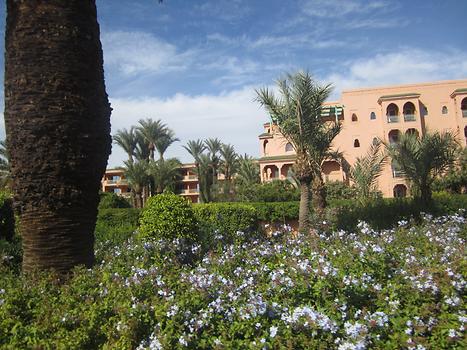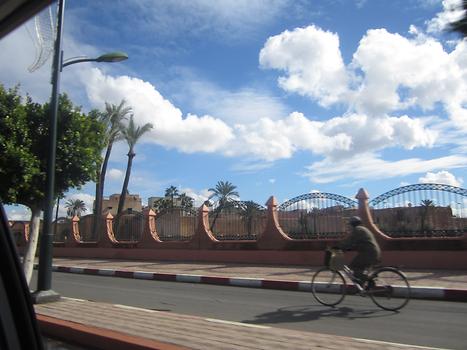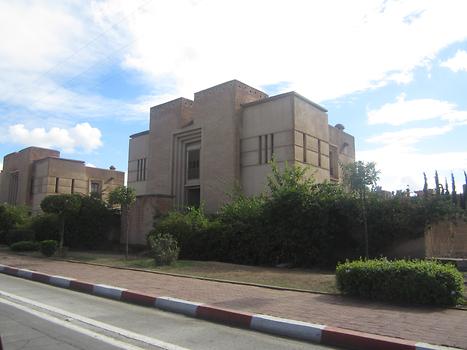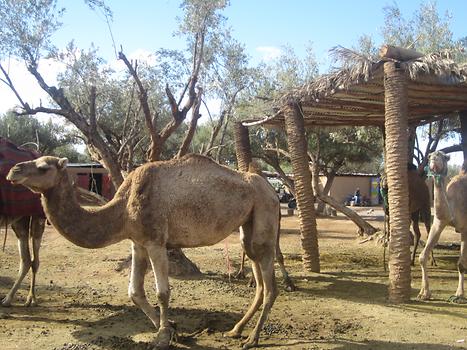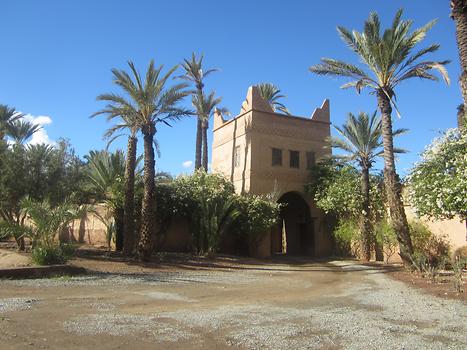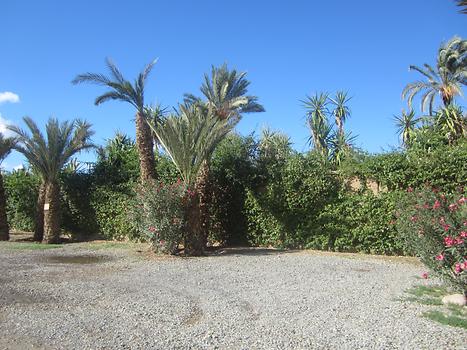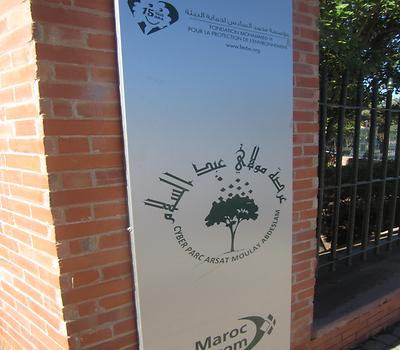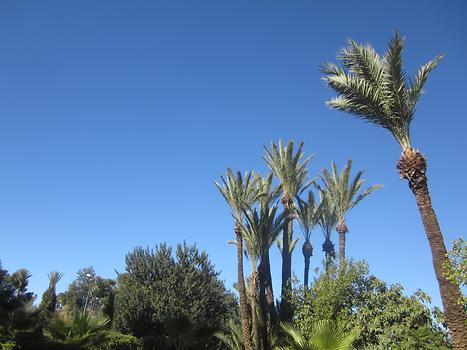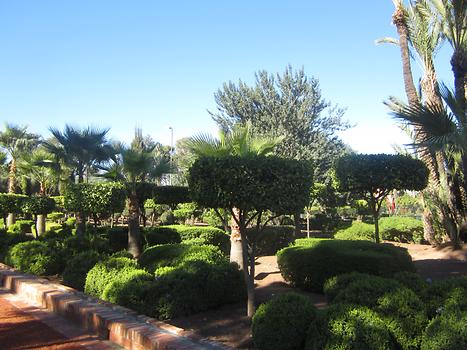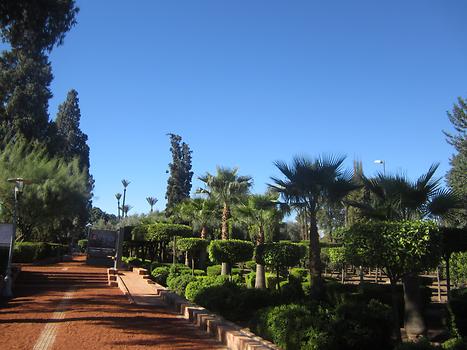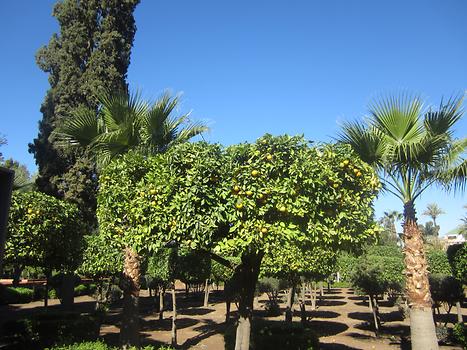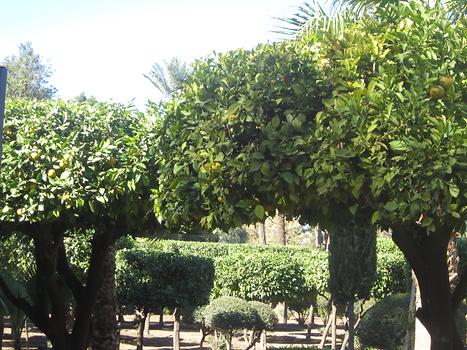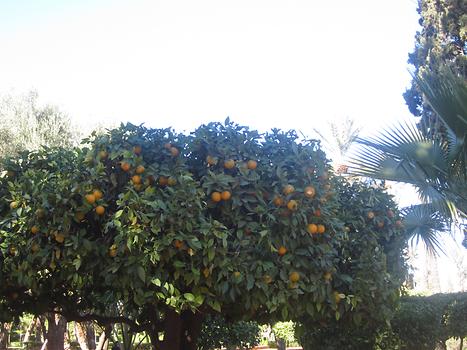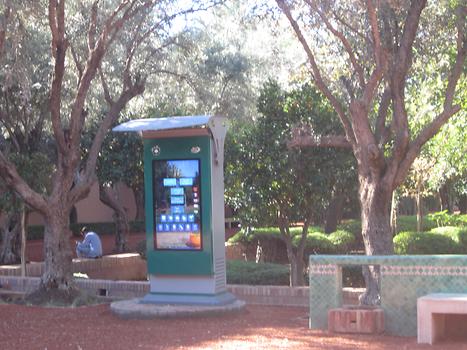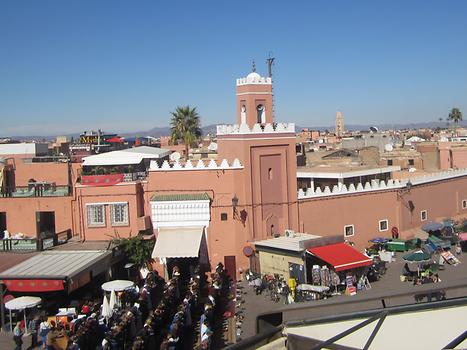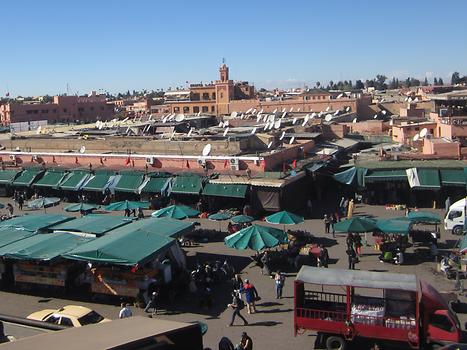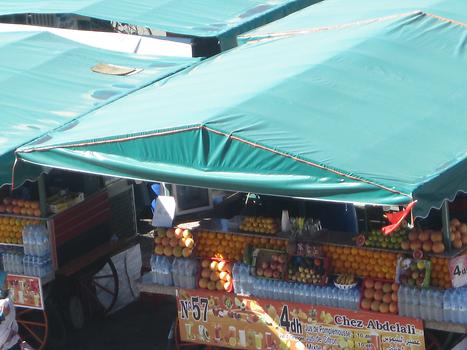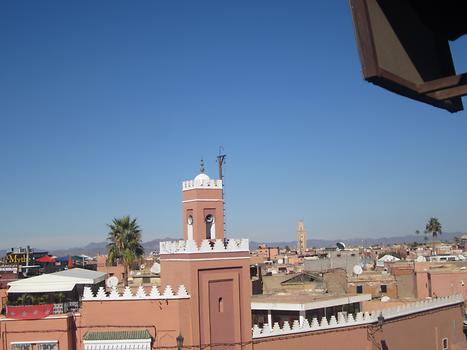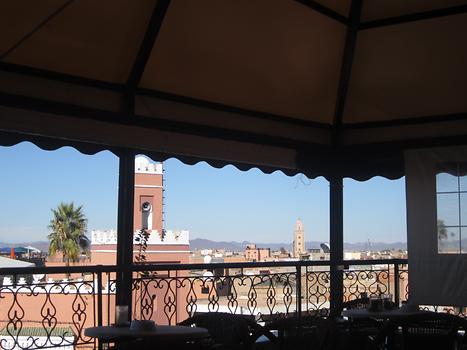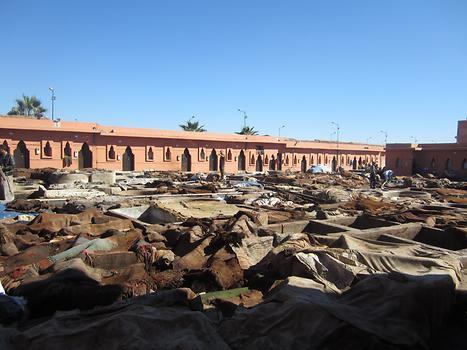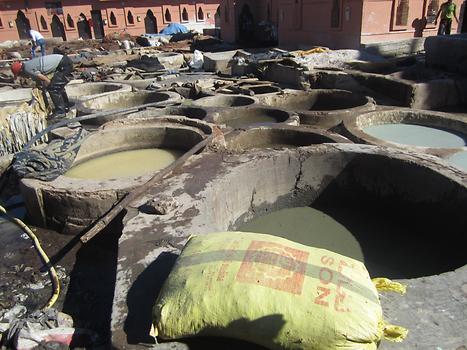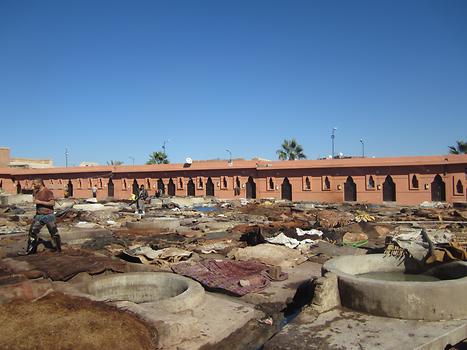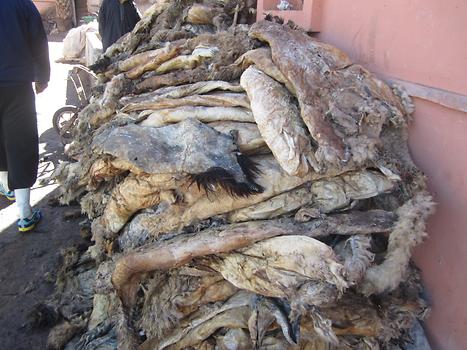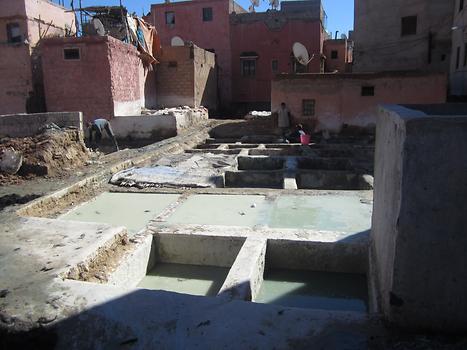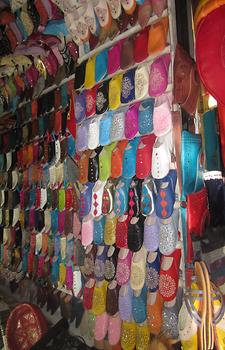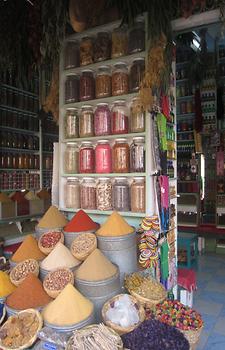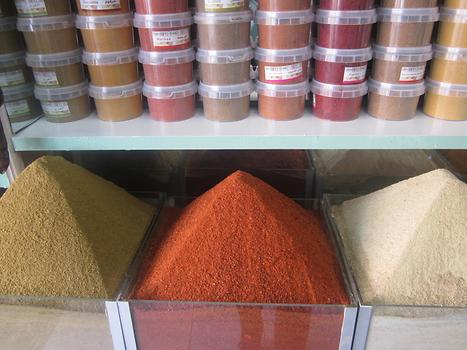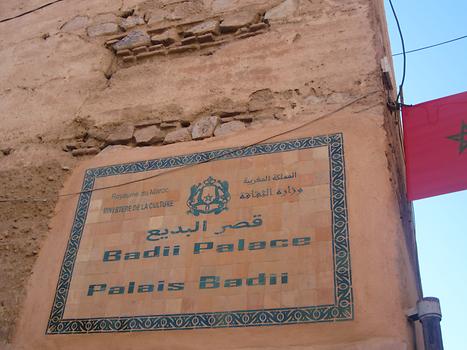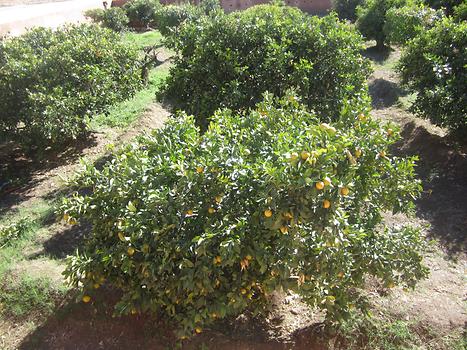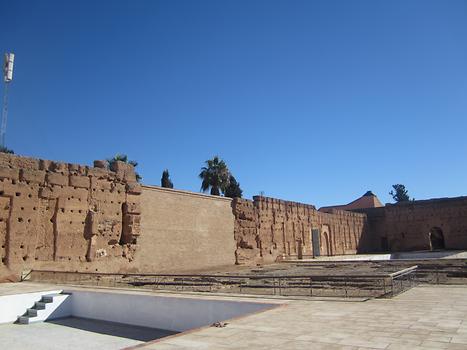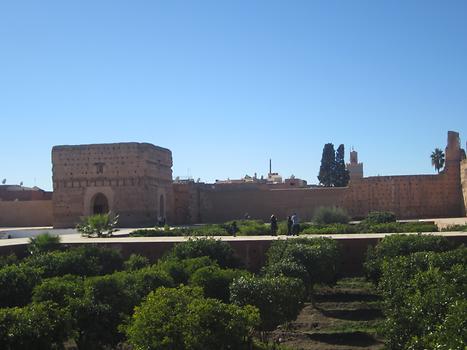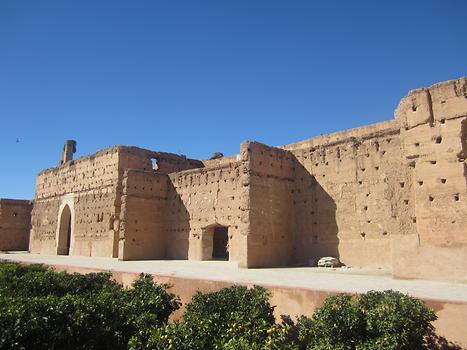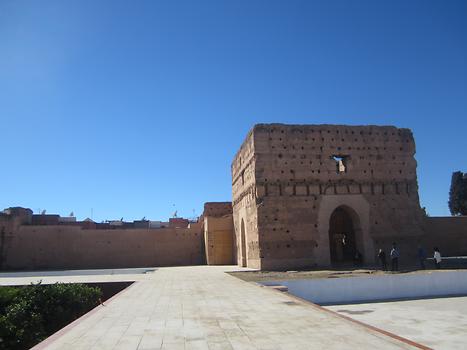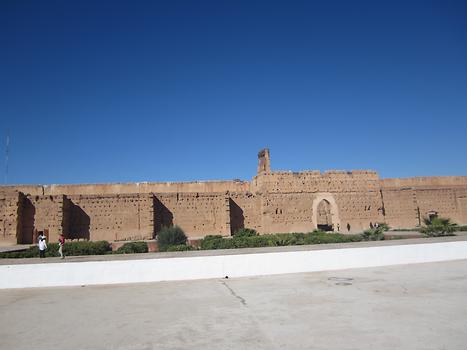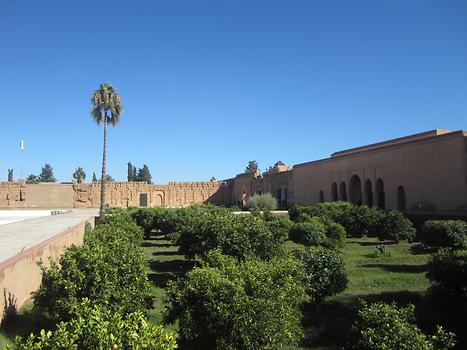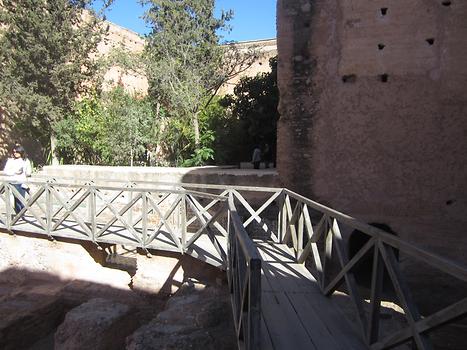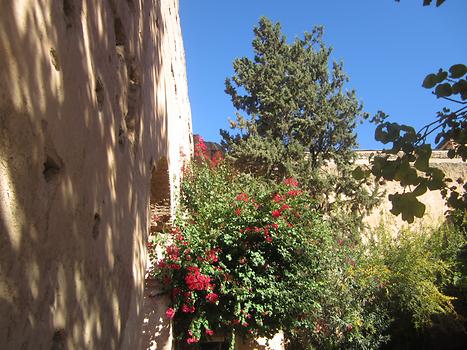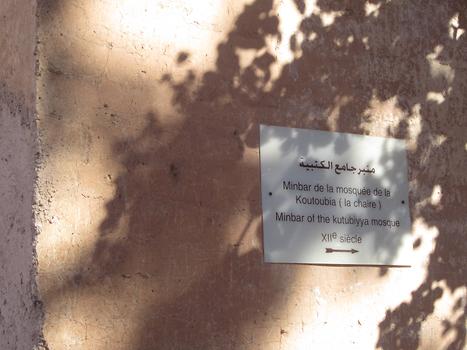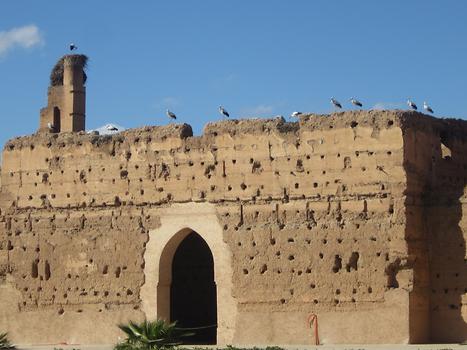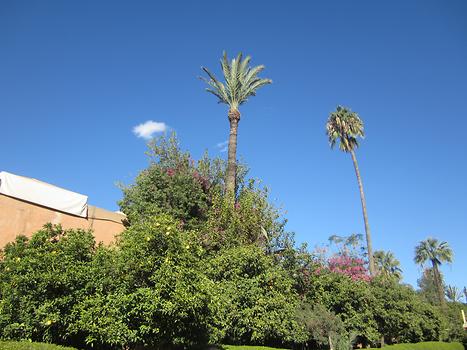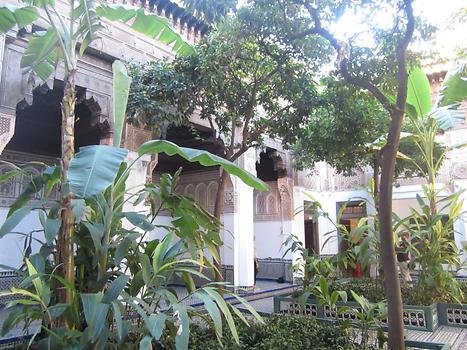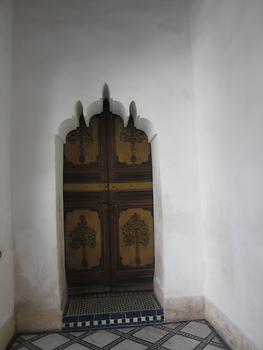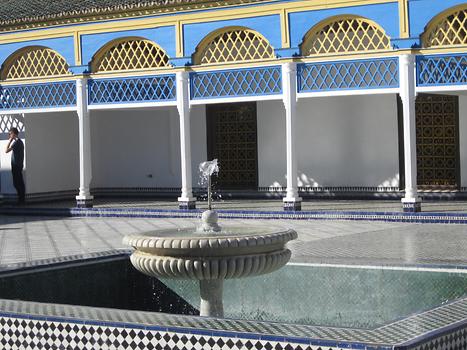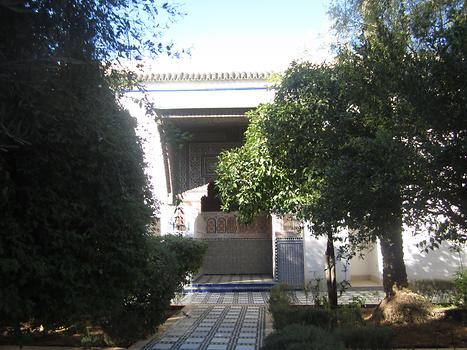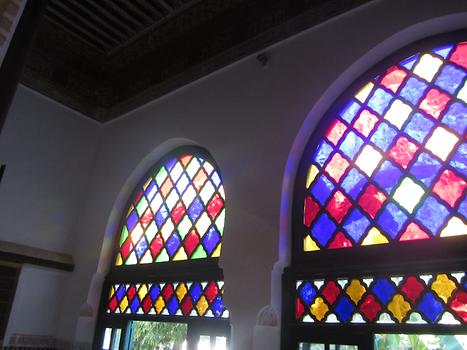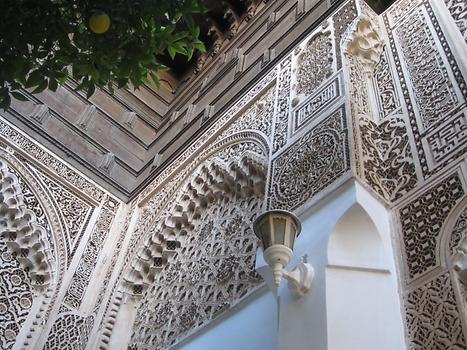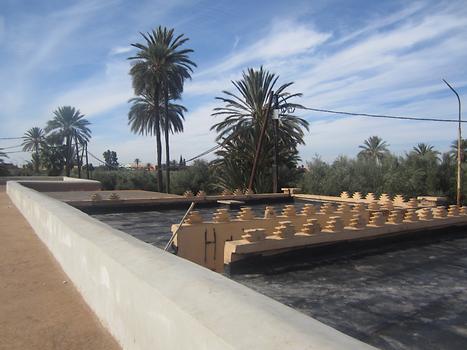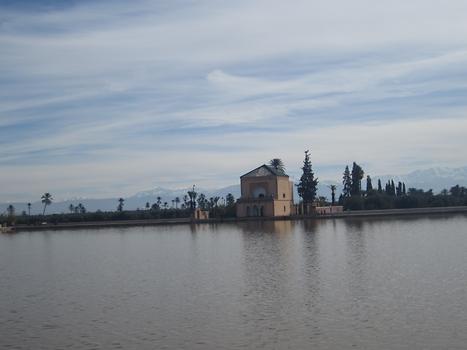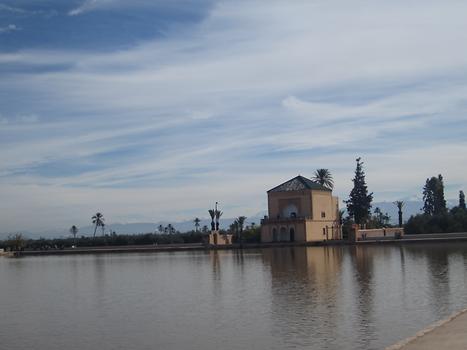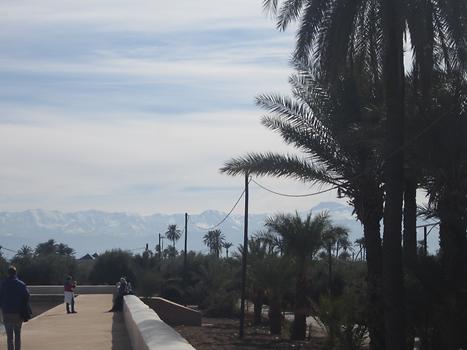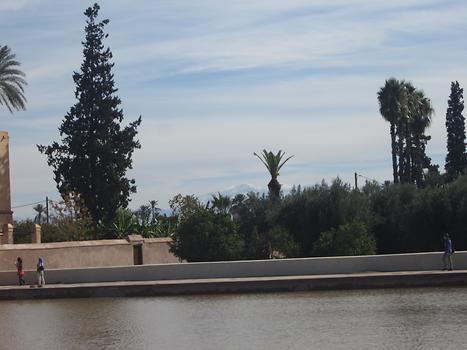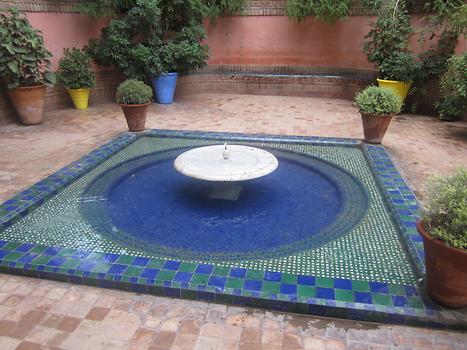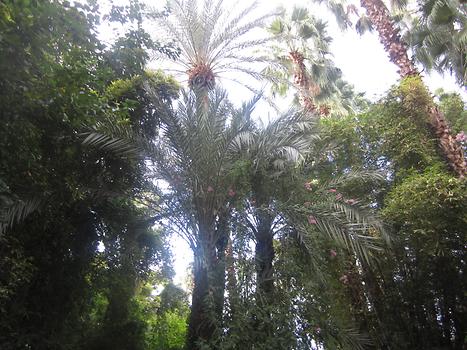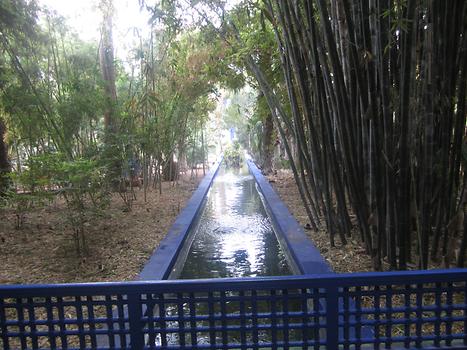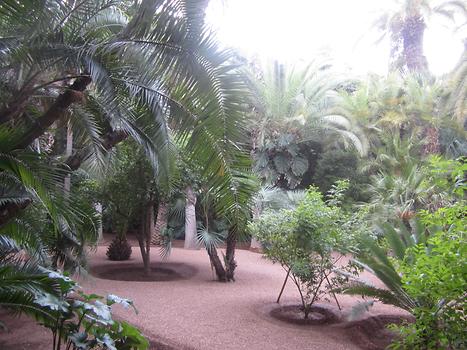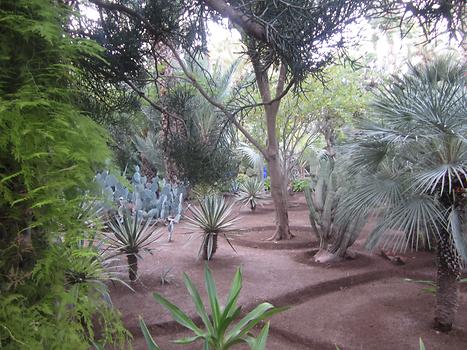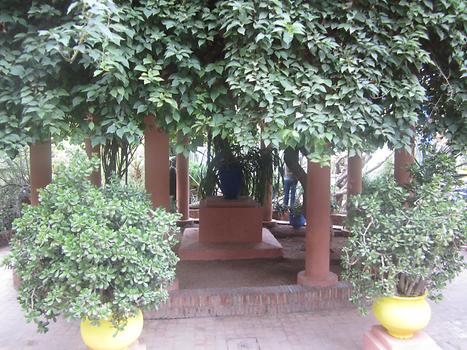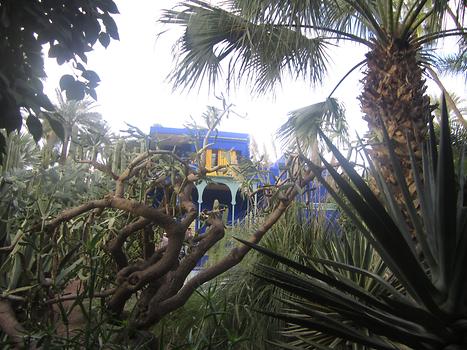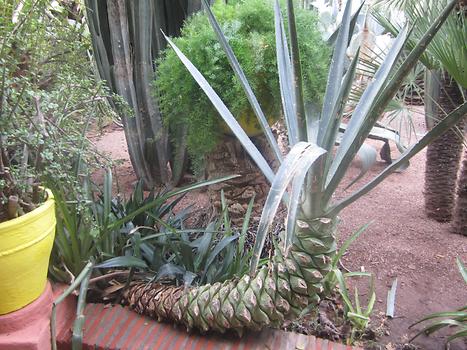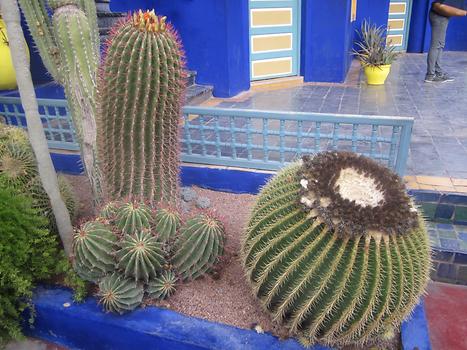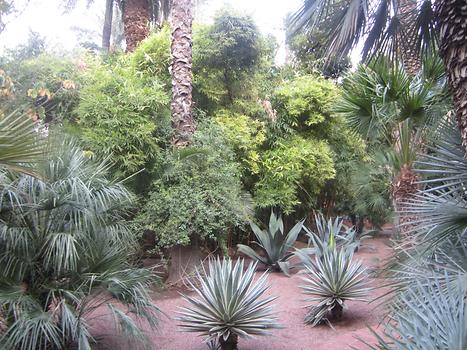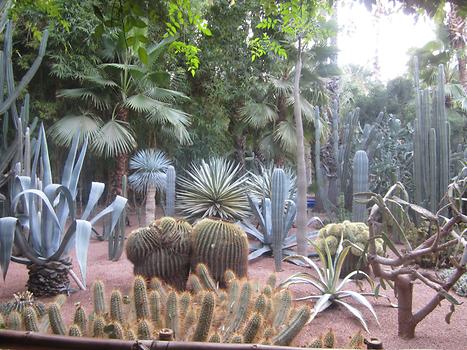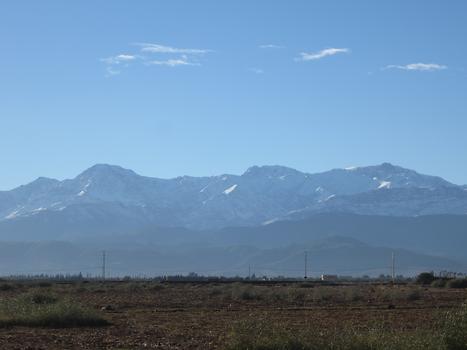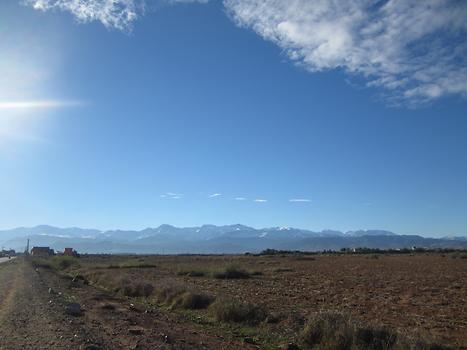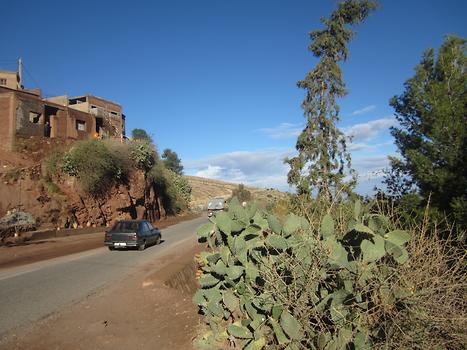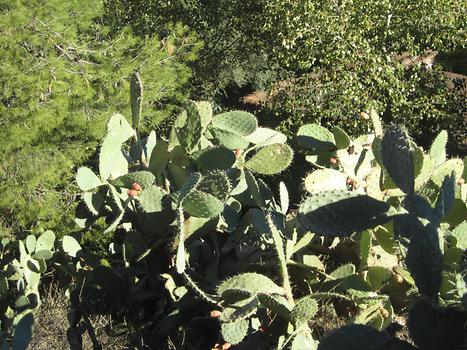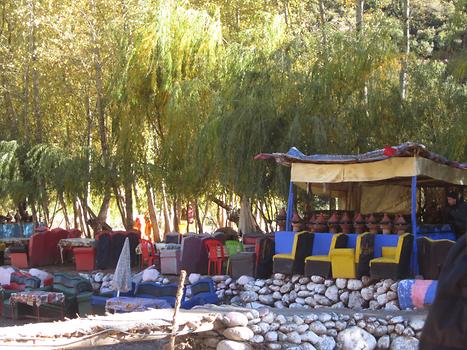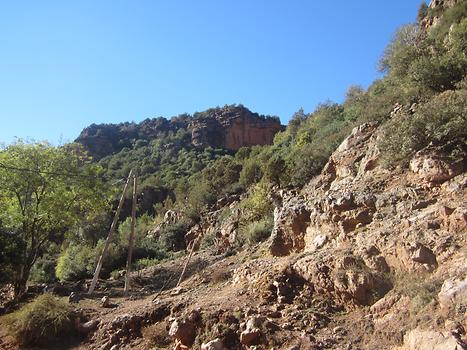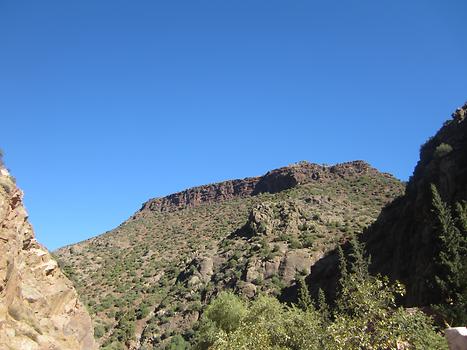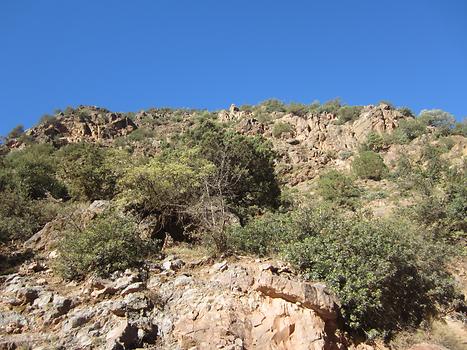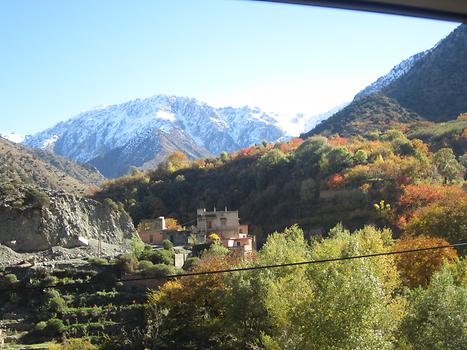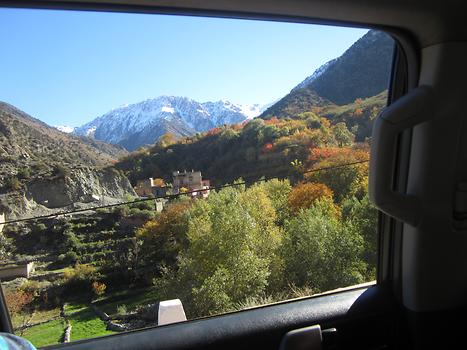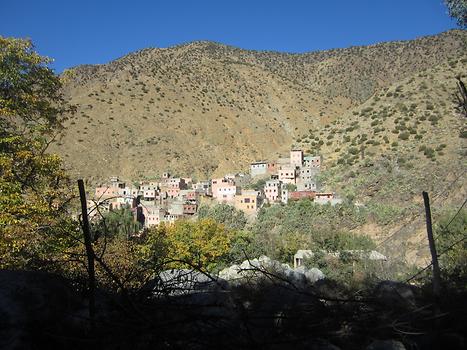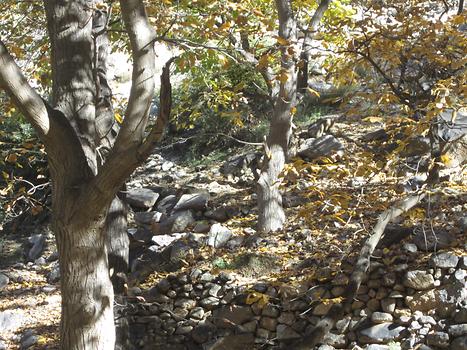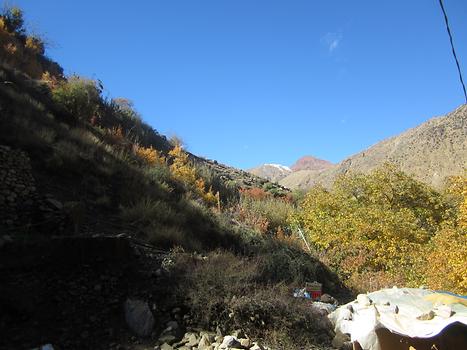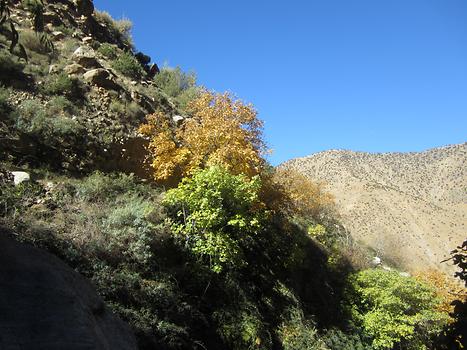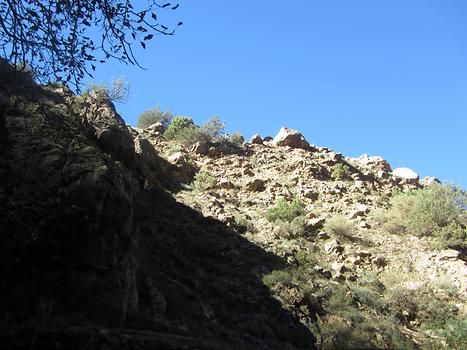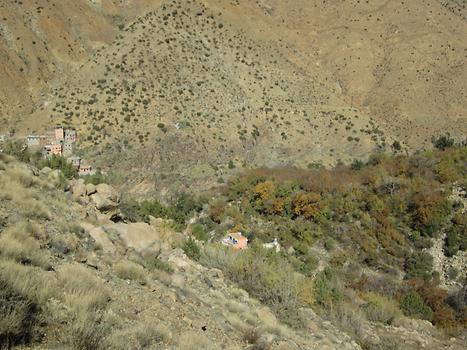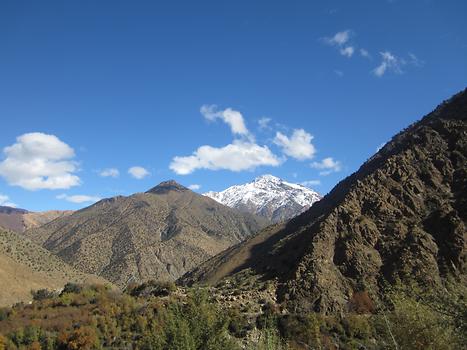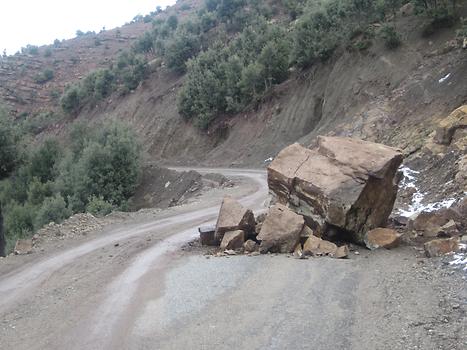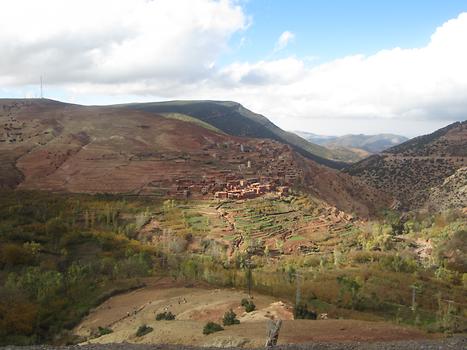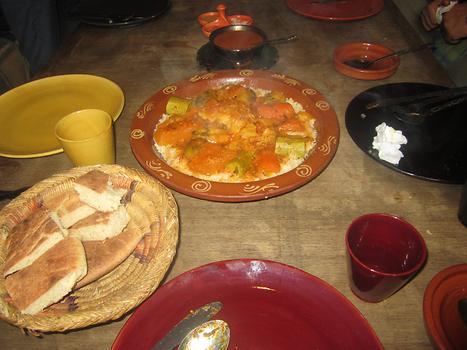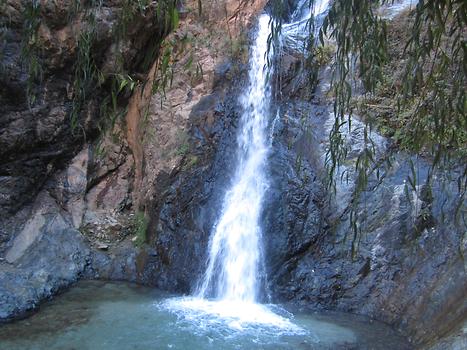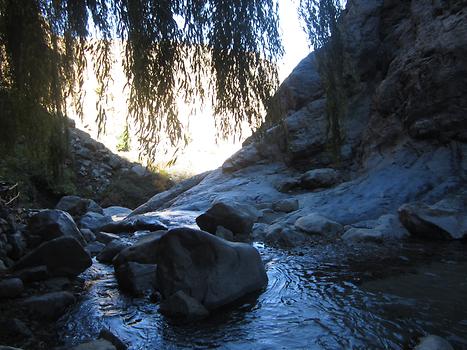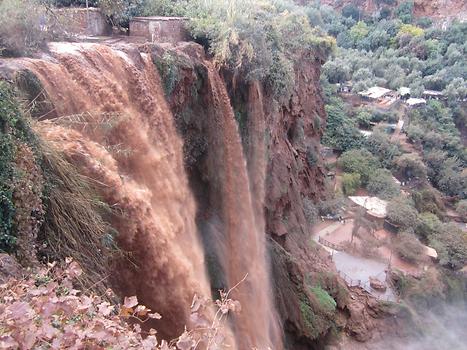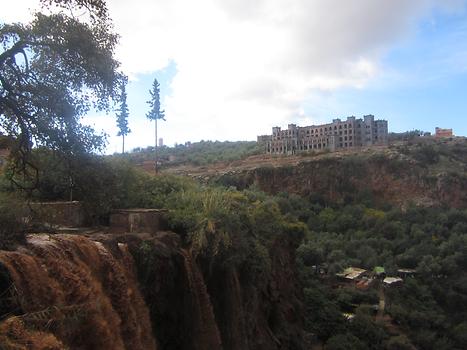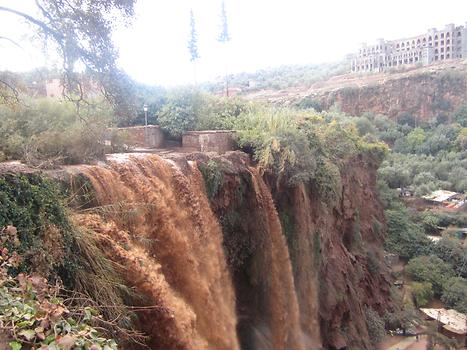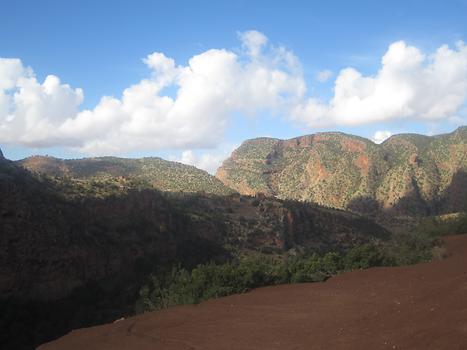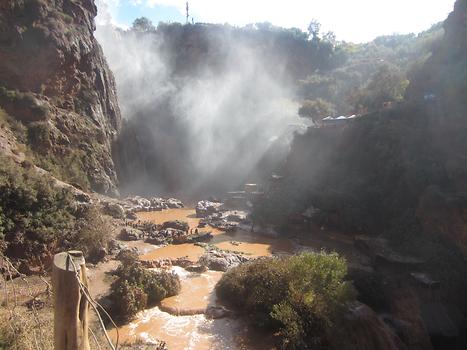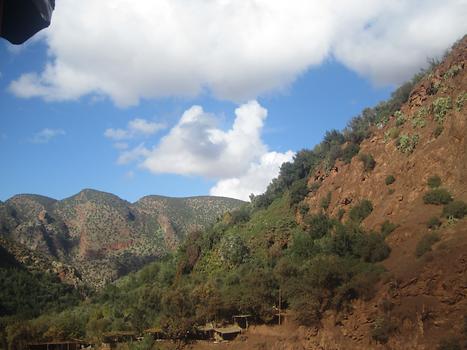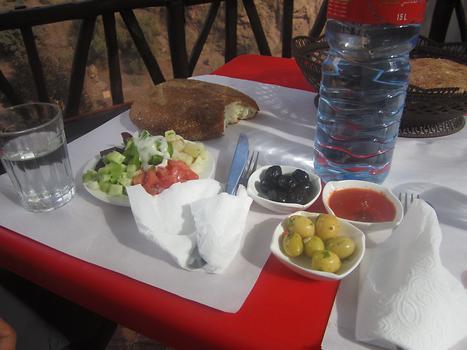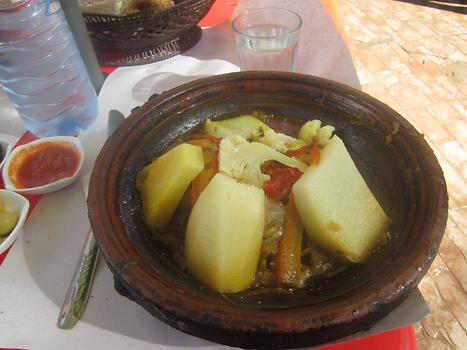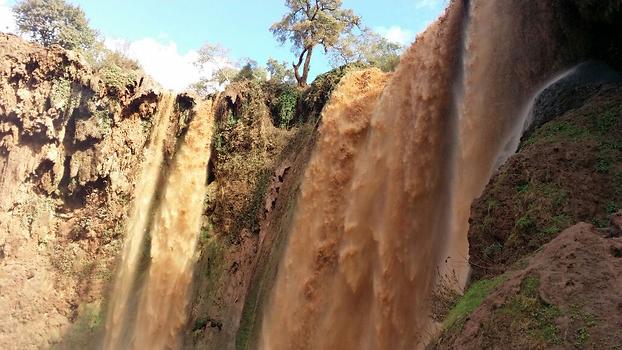Southern Morocco #
To experience Morocco means to experience nature and old culture pure. Morocco, especially the south, is known for its beautiful beaches, bays, the uniqueness of the Atlas Mountains, or marvellous almond trees and its old imperial cities.
Marrakech#
Marrakech Marrakech is the fourth largest city in the country, after Casablanca, Fes and Tangier. Located to the north of the foothills of the snow-capped Atlas Mountains. Marrakech is located 239 km south of Casablanca. It is one of the four former imperial cities. In the 12th century, the Almoravids built many Moranic schools and mosques in Marrakech that bear Andalusian influences. The red walls of the city, built by Ali ibn Yusuf in 1122–1123, and various buildings constructed in red sandstone during this period, have given the city the nickname of the "Red City". The second nickname is "Palm city" because of all the palm trees sourrounding Marrakechs strets. Marrakech grew rapidly and established itself as a cultural, religious, and trading centre for the Maghreb and sub-Saharan Africa. Djemaa el Fnaa is the busiest square in Africa.
Although its importance had some ups and downs over time, it is a unique city with an extraordinary flair. An visit in Marrakech is for example not complete without drinking mint tea. Everywhere you go you can drink this sweet and delicious drink. Offer mint tea is hospitality pure in Morocco.
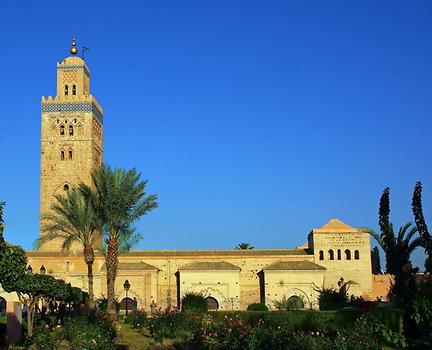

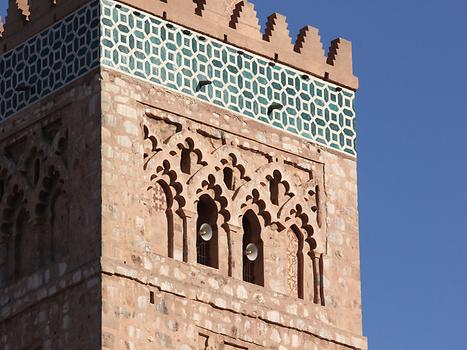
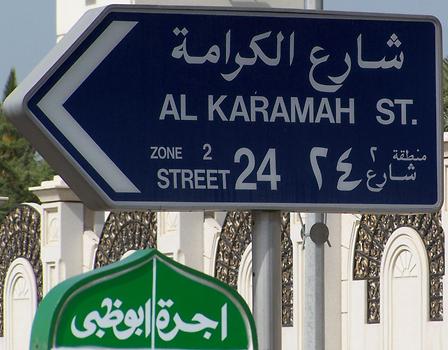
Palmeraie#
In the 12th century there was a beautiful and big date tree plantage. But today the plants are afflicted with a disease and lots of new buildings are also not the best surrounding for the trees. It is also called the moroccan "Beverly Hills" because of all the villas and modern buildings. It is an experience to walk through and explore the golf courses even without playing. Another great adventure to do in the Palmeraie is camel riding. A nice ride through the palantage with a short stop in a village where you get mint tea and fresh bread with honey.
Cyber Parc#
The cyber parc is located between the new city and the Medina. It is a special place for a lot of reasons. On the one hand it is a marvellous green parc and on the other hand you have wifi access really everywhere. It is a popular meeting point for the young peopel in Marrakech.
Djemaa El Fna#
The Djemaa El Fna Djemaa El Fna is like a magnet for tourists and local people equally. The casual atmosphere is one of the most characteristic attributes of Marrakech.
The local people call Djemma El Fna also “ la place”. You can go there all over the day, the visit is worth on every time. But most of the entertainment program starts after the sun goes down. In the middle of the place there is kind of an arena under the sky. You can find snake charmers, acrobats, dancer and much more. There are also men who are telling fairy tales. This is not just for the tourists, most people listening are people from Morocco.
You can find a lot of sellers who offer you fresh orange juice. They are fresh pressed in front of you and very delicious.
Tannery#
The tanneries and there smell are located on the eastern end of the medina. In this part of the city you have to expect „guides“ who bring you to the tannery. They want a fee for showing you the tannery and for the tour you get through it. You see men working in big tanks and using traditional techniques. During the tour you get mint to hold in front of your nose because auf the awful smell.
The process lasts twenty days and did not changed since the middle age. The hide of cows, goats, sheeps and camels is getting cleaned. You should not watch this task to long if you feel uncomfortable with this. After this the hides come in a liquid out of water and blood and then they get prepared with urine and faeces of animals. In the next step the hides get into water again, get dried and coloured.
The working conditions in the tannery are very bad. The workers are standing in the liquid and their skin is in contact with the chemicals the whole day.
Traditionally they used natural colours like saffron for orange, indigo for blue, poppy for red or different fruits and trees.
Souks#
In the dark and tight streets of the souks, the traditional markets in Marrakech, every entrance leads to a „treasury“ full of colourful and exotic secrets. You can buy for example a lot of herbs and spices. You can find souks everywhere in Morocco. But the souks of Marrakech are the biggest. Marrakech arose out of a trading post in the desert. Once African und Spain met here to deal with gold, ivory, leather and metal goods.
On the way through the souks you have to be careful – a lot of moped drivers are passing and they do not take care about pedestrians.
Traditional souvenirs you can buy in the souks are for example „babouches“ (traditional colourful slippers), tea glasses, leathers puffs or baskets.
Palais El Badii#
Once the Palais El Badii Palais El Badii was a huge palace with gold, onyx and marble. It was built under the sultan Ahmed El Mansour (1578 – 1603). The sultan wanted to settle a memorial for this victory over the Portuguese. It lasts 25 years to finish the palace. The later sultan Moulay Ismail (1672 – 1727) needed nearly 12 years to destroy it.
Today the palace is just a ruin, where you can find an extraordinary atmosphere between palm trees and the sound of the storks. In the middle of the palace it is very busy, because people are working to make the atmosphere in the palace nice and green againg.
Important to know:
- The palace had 50 pillars and pavilions
- The palace had 360 rooms
- The main pavilion is 130 m long
You can also find the Minbar of the Koutobia in the palace. It is one of the most beautiful wooden artworks with over 1 000 extraordinary ornaments. You can see frogs, stars or lizards. A minbar is roughly the Islamic equivalent to a pulpit. It follows the form of the stairs used by the Prophet Mohammed to address the faithful in Mecca.
Palais de la Bahia#
The Palais de la Bahia Palais de la Bahia is on the northern end of the Mellah and is an area of silence and green plants. The courtyards are perfect for a break. The palace was built in the second half of the 19th century from Si Moussa and his son Bou Ahmed. He lived there with his four wifes. The palace should be the most beautiful in whole Morocco. El Bahia means “the shining”.
It combines all features of the islamique architecture: Light, water and symmetry . It was planned by El Hai Mohamed El Mekhi over a period of 15 years. Craftsmen of Fès built it. The area of the palace and the garde is about 80 000 m². The area was once a film set for the movie “Lawrence from Arabia”.
Garden Ménara#
The heart of Ménara Garden Jardin Ménara is the artificial lake and the pavilion. It is an unique view with the atlas mountains in the background. People come here to enjoy the view and make a walk through the olive trees.
In winter and spring the view is the most beautiful. Because there you have the snow covered mountains in the back. The garden was arranged in the 12th century from Almohaden for the sultans to have a place to hide form the summer sun. The airport is named by this garden. You can see the pavillon and the lake when you arrive or leave during the day. It is the only parc where you are allowed to make a picnic.

Garden Majorelle#
Garden Majorelle Jardin Majorelle was opened in 1947. The blue walls are known as “Majorelle bleu”. Jacques Majorelle (1886 -1962) was painting subtile and dark aquarelles. , his father Lous was a carpenter. They designed the garden together. After the dead of Jacqued Majorelle no one took care of the garden. 1980 Yves Saint Laurent bought the garden.
When you enter the garden you see a fountain and bambus trees. On the right hand you can see the marvellous little lake with water lilies. In the garden you can find plants all over the world form cactus, bambus and palm trees. 15 types of birds are living in the garden.
The musée d´art islamique is a small and modern museum. You can find there a private and personal collection of islamique art. Once there was the atelier from Jacques Majorelle. Now you find there antique berber jewellery, carved doors, paintings and lot more.
Atlas Mountains#
The Atlas mountains Atlas Mountains stretches around 2 5000 km through three countries: Algeria, Morocco and Tunisia. The highest peak is Jebel Toubkal (4 167 m). The highest point is located in the southwestern of Morocco. The people who live in the Atlas mountains are most Berber. Berber are a special ethnic group in Morocco.
In the mountains you can find a lot of plants and animals which are typical and unique in Africa. The mountains are also rich in natural resources: iron ore, lead ore, copper, silver, mercury, rock salt, natural gas, …
The Atlas Mountains are the reason that in Marrakech they do not have a problem with water. They get enough from the mountains.
Ourika valley#
The ourika valley Ourika valley is around 50 km away from Marrakech. Die journey is easy and worth when you want to get a first impression of the Atlas Mountains. The berber people live here in small villages and cultivate the high planes of the valley. Ourika valley is in the high atlas. The high atlas rises in the west at the Atlantic coast. It stretches in the direction to the Moroccan-Algerian border.
Because it is so close to Marrakech is it an popular destination for day trips from Marrakech. You can explore the nature and the Berber people in their natural surroundings. Watch for example women producte argan oil. Argain oil is produced from the kernels of argan tree. It is a plant oil. It is very popular using cosmetics with argan oil.
Setti Fatma Waterfalls#
At the end of the road in the ourika valley you find the valley Setti Fatma Setti Fatma . The valley is not extraordinary, but therefore the hills are. The way up the waterfalls is a great experience with an view you want to catch forever. When you have luck you can see monkeys or you can talk to the people in the mountains who make little things out of the stones of the mountain.
Ouzoud waterfalls#
The ouzoud waterfalls 32.0153112,-6.7220085,17 are 110 m high and are located near the village of Tanaghmeilt, 150 km awayr from Marrakech. You can go to the bottom of t he waterfalls through a calm path with a lot of olive trees. The olive trees have colour points, so that the berber familes know with tree belongs wo which family. When a berber man marries a berber woman both colours of the families are on the olive tree.
Ouzoud means olive oil in the moroccan language. There are still a lot of olive mills where people producte the oil by the old traditional way.
You can go down to the bottom of the waterfall. There you can cross the river by boat. The way down is not so easy and very slippery. It depend on the weather conditions if you are allowed to walk there. The area is popular for its beautiful colours. The red of the stones, the green trees and the white and blue of the water (just not in this pictures – the water is red due to the raining of the days before – but also with red water the waterfalls are impressive).
A few YouTube clips on Morocco#
- Morocco Sahara Odysee (12:58)
- God, Homeland, King (1:39)
- Marrakech and Hot air Ballon (17:47)
- Best of Morocco Documentary 2016 (1:09:42)
